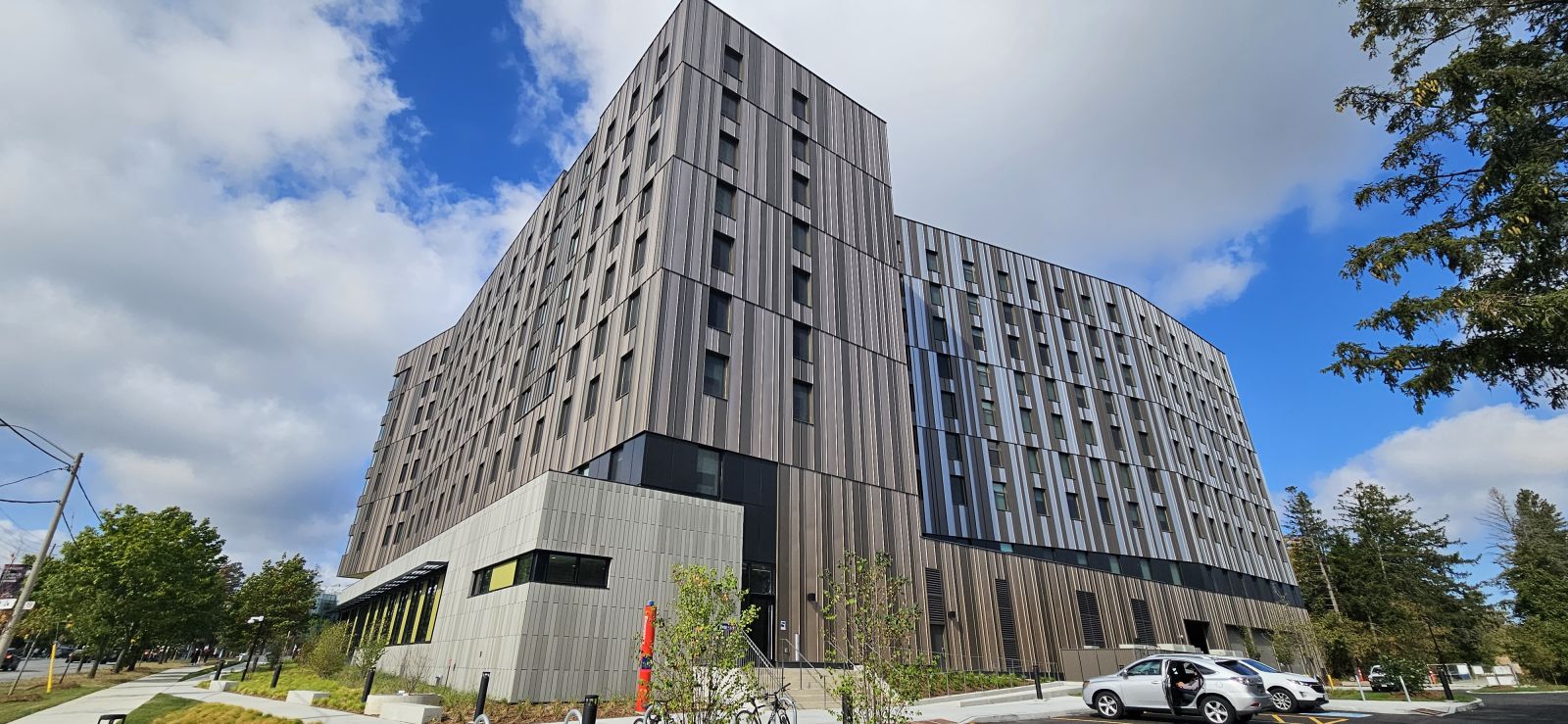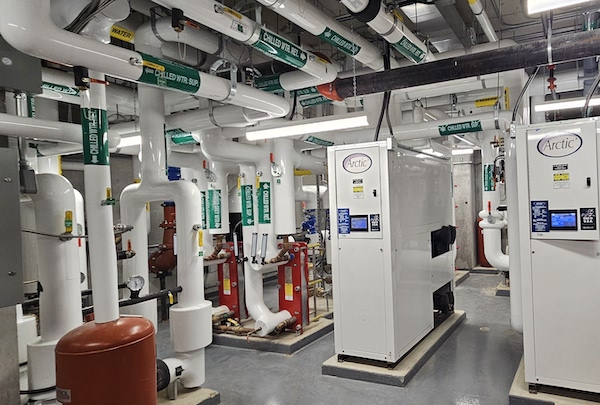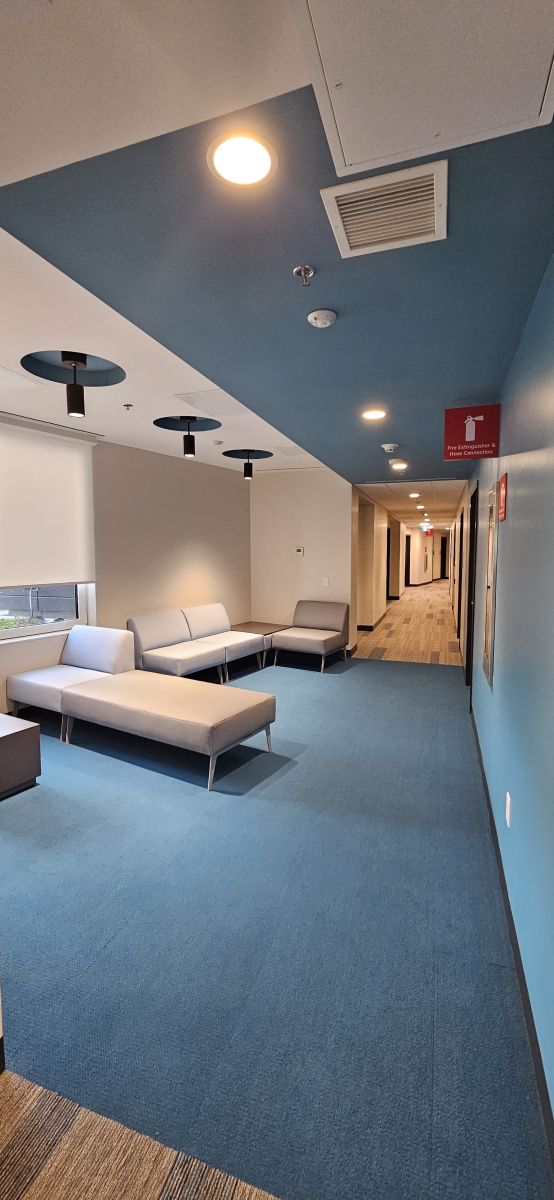The Future of Houses is Passive
University of Toronto’s latest student residence welcomes the future of living with spaces that are warmed by laptops and shower water.
In September 2023, one of North America’s largest residential passive homes, Harmony Commons, located on the University of Toronto Scarborough campus, opened its doors. The residential building is designed to house 750 students, and harnesses warmth generated by both the occupants and electronic devices such as laptops, lights, TVs, and refrigerators to regulate and sustain the indoor climate.

Passive House buildings, or Passivhaus, are eco-conscious structures that consume up to 90 percent less energy for heating and cooling compared to traditional buildings. They are built following globally standardized design principles and criteria, which include superior insulation that uses the heat generated within the building to maintain a comfortable indoor temperature with very little energy usage. As a result, passive houses have a significantly lower carbon footprint, and are a fundamental piece of the puzzle towards a low-carbon future.
Passive homes, remarkable results
Each passive home is unique, and is the result of intelligent design and implementation of key passive house principles that include air tightness, mechanical ventilation, and efficient insulation.
Superior insulation is the backbone of passive houses; it’s what helps reduce heat loss and gain. Thicker, higher-quality insulation is applied to walls, floors, and roofs, while windows and doors are designed with multiple panes of glass and airtight construction to prevent uncontrolled air exchange. To maintain indoor air quality, mechanical ventilation systems exchange stale indoor air for fresh outdoor air while also retrieving heat from the outgoing air. Passive houses also use thermal mass elements like concrete floors and walls to absorb and collect heat from the sun during daylight hours, dispersing it gradually to warm the interior at night while considering the body heat of its occupants — an overlooked but significant component of maintaining comfortable indoor temperatures.
Another key component of a passive house is the greywater system. Greywater heat recovery systems capture heat from warm water used in showers, baths, sinks, and washing machines, and transfer it to preheat the cold-water supply entering the water heater or boiler.
Greywater in a passive house can also maintain incoming ventilation air using a heat exchanger that transfers heat from greywater to fresh air entering the building. In winters, this process warms the inward air. During summers, it cools the incoming air, limiting energy demand across seasons.
Passive houses ensure there is a continued supply of filtered fresh air distributed to each individual unit. A healthy atmosphere is prioritized with a compartmentalized design and air-tight seals that also prevent the aerial transmission of viruses, such as COVID-19.
Designing and constructing a passive house is financially feasible; while the upfront cost is often 10 percent higher than a traditional building, the vastly reduced utility bills and the elimination of a conventional HVAC system can reduce operational and construction costs by more than 80 to 90 percent.
 Sustainable living in North America
Sustainable living in North America
Passive houses, with roots in Germany, are gaining momentum in North America as an innovative design approach that leads the way toward high-performance, low-energy buildings.
Passive houses like UofT’s student residence incorporate effective and efficient implementation of mechanical systems that optimize energy recovery while reducing penetration through the building’s envelope. Part of that strategy is to employ heat pumps and heat pump chillers, which are a component of the heat recovery system, as well as energy recovery ventilators throughout the building. When the building is occupied, operators also monitor energy consumption through energy metering.
They may have a straightforward name, but passive houses are intelligent structures that do not use geothermal, sun, or wind energy for power. The goal is simply to reduce the energy required for space conditioning.
By prioritizing insulation, airtightness, and solar designs, passive houses foster an energy-efficient, secure, indoor environment that is naturally warmer, healthier, and more comfortable. As they continue to evolve worldwide, with zero and even positive energy, passive houses make the global green transition feel right at home.
Justin Biordi is a Project Manager, Mechanical Construction, at Black & McDonald, an integrated, multi-trade service provider that delivers high-quality construction, facilities management, and technical solutions.
Black & McDonald | blackandmcdonald.com
Author: Justin Biordi
Volume: 2023 November/December








